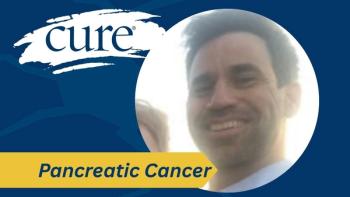
Survivorship Experts Agree on Essential Elements of Survivorship Care
LIVESTRONG released the first list of 20 essential elements needed in a survivorship program that was generated from a gathering of survivorship thought leaders.
There is a lot happening in cancer survivorship these days. In December, LIVESTRONG released the first list of 20 essential elements needed in a survivorship program that was generated from a gathering of survivorship thought leaders. In addition, the American College of Surgeons Commission on Cancer (COC) accreditation rules for this year are adding a number of patient-centered standards, including a Survivorship Care Plan.
Others have offered aspects of survivorship programs but LIVESTRONG Essential Elements Brief is the first of its kind that organizes 20 different aspects of care. The list of elements was honed from 101 provided at a mid-September meeting in Washington, D.C. by some 150 thought leaders in survivorship, including representatives from the American Cancer Society, the National Coalition for Cancer Survivorship, Cancer Support Community, LIVESTRONG Survivorship Centers of Excellence, cancer survivors and advocates.
[Blog: What does it take to create an ideal survivorship care program?]
Linda A. Jacobs, PhD, RN, director of the LIVESTRONG Survivorship Center of Excellence at Abramson Cancer Center, University Pennsylvania in Philadelphia, says the meeting was a great opportunity to collaborate with other leaders in the field and helped to build consensus among key stakeholders on what elements a cancer survivorship program should provide (directly or via referral) to post-treatment cancer survivors.
...We will develop a toolkit with a roadmap and necessary tools to aid survivorship care providers in integrating the essential elements into practice.
Arvey says the project is critical right now since the COC has added a survivorship care plan to its 2012 accreditation standards. The survivorship care plan is given to the patient at the completion of treatment and “contains a record of care received, important disease characteristics, and a follow-up care plan incorporating available and recognized evidence-based standards of care, when available.” The plan is listed as the first item in the 20 essential elements.
The COC has more than 1,500 accredited cancer programs in the United States and Pureto Rico, representing 30 percent of general hospitals that provide care to about 70 percent of newly diagnosed cancer patients annually.
The eight-page “The Essential Elements of Survivorship Care: A LIVESTRONG Brief” document divides the elements into three tiers: must have, should have and strive to have, that were synthesized using a series of five consensus-building activities and panel discussions.
Tier 1: Consensus Elements
All medical settings MUST provide direct access or referral to the following elements of care:
> Survivorship care plan, psychosocial care plan and treatment summary
> Screening for new cancers and surveillance for recurrence
> Care coordination strategy, which addresses care coordination with primary care physicians and primary oncologists
> Health promotion education
> Symptom management and palliative care
Tier 2: High-Need Elements
All medical settings SHOULD provide direct access or referral to these elements of care for high-need patients and to all patients when possible:
> Late effects education
> Psychosocial assessment
> Comprehensive medical assessment
> Nutrition services, physical activity services and weight management
> Transition visit and cancer-specific transition visit
> Psychosocial care
> Rehabilitation for late effects
> Family and caregiver support
> Patient navigation
> Educational information about survivorship and program offerings
Tier 3: Strive Elements
All medical settings should STRIVE to provide direct access or referral to these elements of care:
> Self-advocacy skills training
> Counseling for practical issues
> Ongoing quality-improvement activities
> Referral to specialty care
> Continuing medical education
There are eight survivorship centers in the LIVESTRONG Survivorship Center of Excellence Network, including Abramson Cancer Center of the University of Pennsylvania, Dana-Farber Cancer Institute, University of California, Los Angeles’ Jonsson Comprehensive Cancer Center, Fred Hutchinson Cancer Research Center, Memorial Sloan-Kettering Cancer Center, The Ohio State University Comprehensive Cancer Center—James Cancer Hospital and Solove Research Institute, University of Colorado Cancer Center, University of North Carolina at Chapel Hill Lineberger Comprehensive Cancer Center.
Each of the centers receives funding from LIVESTRONG to create and maintain a survivorship program that has psychosocial, clinical and research components as well as community partners.
Numerous other survivorship programs exist in cancer centers across the country, but there is no standardization. By releasing the essential elements, LIVESTRONG hopes to create a standard for programs going forward.
Jacobs says the thought leaders will continue developing the elements as part of the LIVESTRONG professional training activities. “We have been divided into groups to examine subsets of elements within tiers and determine how to operationalize them,” she says.
Sarah R. Arvey, PhD, senior manager of Research and Evaluation at LIVESTRONG, says the next steps for the Essential Elements of Survivorship Care Project are to refine the definitions, lead efforts toward the integration of survivorship care into the cancer care continuum and conduct research that will provide solid evidence that backs the recommendations.
“As part of the project … we will develop a toolkit with a roadmap and necessary tools to aid survivorship care providers in integrating the essential elements into practice.”




